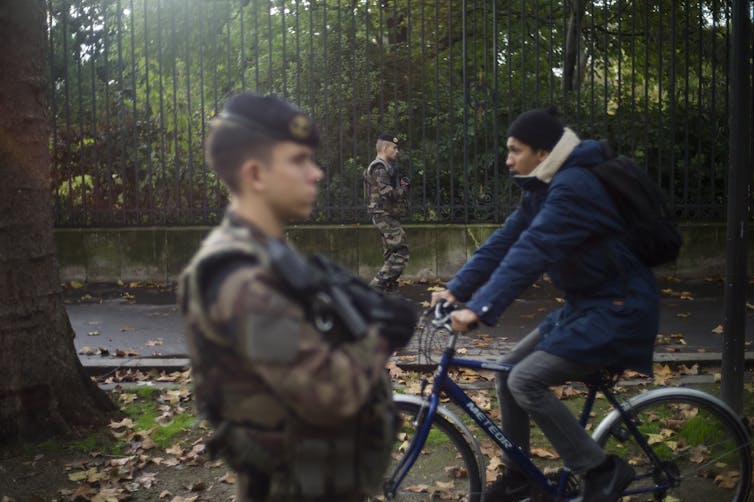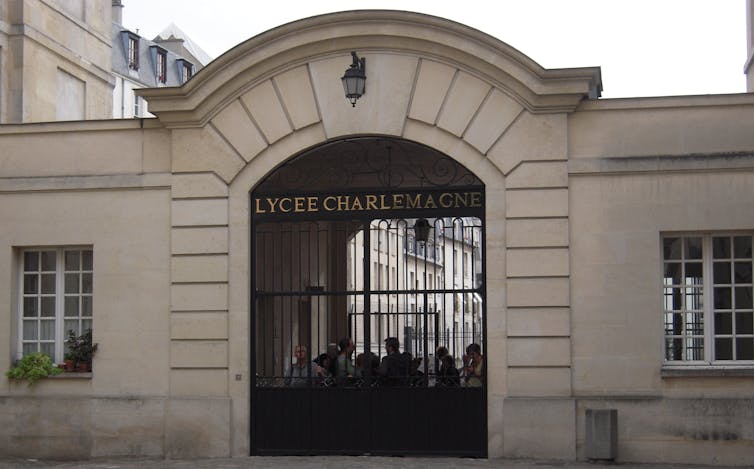It has been one year since the attacks on November 13, 2015 chilled all Parisians – Muslim, Christian, Jewish and secular alike – to the core. In coordinated attacks on a football match and a music concert, 130 innocent civilians lost their lives, and hundreds more were injured. The immediate impacts were obvious: police began a manhunt for suspects which would lead all the way to Brussels, and French President François Hollande imposed a nation-wide state of emergency which remains in place to this day.
Further atrocities have occurred across France, from Rouen in the north to Nice in the south. But Paris has been the symbolic and geographical centre of such attacks – and they have transformed the city in ways which are still coming to light.
Paris is a global hub for business, arts, diplomacy and culture, and the wider region is home to more than 12m people. As with other large cities that have experienced terror attacks, such as London and New York, life simply had to go on. But it is not the same as before. Parisians have had to settle into a bizarre “new normal”, where daily routines are interrupted by unfamiliar sights, sounds and inconveniences.
Perhaps the most obvious change has been the introduction of the huge security programme, “Operation Sentinelle”: a major military deployment in civilian areas to complement France’s “Plan Vigipirate” terror alert system. As a result of these measures, Paris has seen the largest deployment of military personnel since the second world war.

Of the 10,000 soldiers deployed nationally, more than 6,500 are based in the Paris metropolitan area. Parisians have had to adjust to the sight of military uniforms patrolling subway stations, museums, major streets and religious sites. While these troops were deployed to support police and reassure civilians, they have also served as a constant reminder that life has not fully returned to normal.
If anything, the atmosphere of the city has grown tense, and residents have become jumpy. Parisians have expressed shock at the growing frequency of evacuations due to suspicious packages and vehicles – these were not widespread before the recent wave of attacks. This sense of unease has manifested in unexpected ways.
Safe schools
One of the more disturbing new measures has been the decision to allow Parisian high school students to smoke on school premises. This behaviour has been banned since the early 1990s, but schools are anxious to prevent groups of students gathered outside high school gates from becoming targets.
Students have also been briefed on what to do in the event of a terrorist attack or incursion into school territory. During a recent research trip for a new project in France, the parents of Parisian school children have told me that their children were instructed to hide under their desks and remain silent, if the alarm is raised that a heavily armed terrorist is rampaging through their high school. This has deeply shocked them.
The lycée holds a special space in French life, as a place for children to experiment with their identities, have teen romances and grow up. This securitisation of school spaces curtails the sense of innocence which once accompanied education in France.

Of course, there are inequalities between the prestigious institutions on the left bank, and the crumbling, ineffective schools in the poorer Parisian suburbs where I have done much of my research. And indeed, bullying is a terrible problem right across the spectrum.
But these measures mark a significant shift in the way parents, teachers and students regard the lycée: they have gone from seeing it a safe space, to a target for political violence. The students, however, are apparently not as concerned by this as their parents. Many simply haven’t experienced less troubled times: for them, this is normal.
On the periphery
The suburbs on the outskirts of Paris have changed just as much as the centre. While extra security has been deployed to reassure residents in Paris proper, the interventions in areas such as Saint Denis in the north, and Vitry to the south, have had a rather different effect.
The communities which live in these areas tend to be poorer, and have higher numbers of migrants, than the rest of the city. In the wake of the Paris attacks, they have experienced an intensification of longstanding difficulties, where those of north and West African origin are denied jobs, treated with suspicion, and subject to outright hostility.
While reports suggest that these sites of poverty and high numbers of migrants are the origin of the recent wave of attacks, the overwhelming majority of residents – whether Muslim or not – have no sympathy for terrorism.
Yet these same communities have overwhelmingly been targeted with extra-judicial powers: individuals have been wrongly confined to house arrest, detained in prison and had their lives and business ruined as a result. One shop keeper was detained because someone known to associate with extremists was a regular customer at his shop.
Sadly, there have been several moments when this hostility has tipped over into civilian life. For instance, earlier this year two Muslim women were ejected from a cafe by the owner, who was filmed telling them that “all terrorists are Muslim, and all Muslims are terrorists”. Around France, the “burkini ban” has further fuelled anti-Islamic sentiment, with some claiming the garment expresses an “allegiance to terrorist movements”.
Both sides of Paris – a city of unparalleled inequality and marginalisation across Western Europe – are suffering from the effects of this “new normal”. Civilians, politicians and scholars must know that the way to over these attacks is not to “protect” one side of the city from another. The memory of the Muslim victims of terrorism in France, and those further afield in throughout Europe, the Middle East and Asia, remind us that we all need protection from the small number of people seeking to bring violence and bloodshed into our daily lives.

